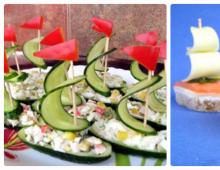Recipe for chicken liver with honey and soy sauce. Calorie, chemical composition and nutritional value. Chicken liver fried with onions Chicken liver in honey lemon sauce
chicken liver with honey and soy sauce rich in vitamins and minerals such as: vitamin A - 1155%, vitamin B1 - 18.2%, vitamin B2 - 62.1%, choline - 33.7%, vitamin B6 - 41.8%, vitamin B9 - 52, 8%, vitamin B12 - 478.6%, vitamin C - 14.4%, vitamin PP - 58.9%, phosphorus - 28.8%, iron - 62.2%, cobalt - 144.5%, manganese - 18.2%, copper - 36.6%, molybdenum - 71.8%, selenium - 86.3%, chromium - 16.7%, zinc - 49.8%
Benefits of chicken liver with honey and soy sauce
- Vitamin A responsible for normal development, reproductive function, skin and eye health, and maintaining immunity.
- Vitamin B1 is part of the most important enzymes of carbohydrate and energy metabolism, providing the body with energy and plastic substances, as well as the metabolism of branched amino acids. A lack of this vitamin leads to serious disorders of the nervous, digestive and cardiovascular systems.
- Vitamin B2 participates in redox reactions, helps to increase the color sensitivity of the visual analyzer and dark adaptation. Insufficient intake of vitamin B2 is accompanied by impaired condition of the skin, mucous membranes, and impaired light and twilight vision.
- Kholin is part of lecithin, plays a role in the synthesis and metabolism of phospholipids in the liver, is a source of free methyl groups, and acts as a lipotropic factor.
- Vitamin B6 participates in maintaining the immune response, processes of inhibition and excitation in the central nervous system, in the transformation of amino acids, the metabolism of tryptophan, lipids and nucleic acids, promotes the normal formation of red blood cells, maintaining normal levels of homocysteine in the blood. Insufficient intake of vitamin B6 is accompanied by decreased appetite, impaired skin condition, and the development of homocysteinemia and anemia.
- Vitamin B9 as a coenzyme they participate in the metabolism of nucleic acids and amino acids. Folate deficiency leads to disruption of the synthesis of nucleic acids and proteins, resulting in inhibition of cell growth and division, especially in rapidly proliferating tissues: bone marrow, intestinal epithelium, etc. Insufficient folate intake during pregnancy is one of the causes of prematurity, malnutrition, and congenital deformities and child development disorders. A strong relationship has been shown between folate and homocysteine levels and the risk of cardiovascular disease.
- Vitamin B12 plays an important role in the metabolism and transformation of amino acids. Folate and vitamin B12 are interconnected vitamins that are involved in hematopoiesis. A lack of vitamin B12 leads to the development of partial or secondary folate deficiency, as well as anemia, leukopenia, and thrombocytopenia.
- Vitamin C participates in redox reactions, the functioning of the immune system, and promotes the absorption of iron. Deficiency leads to loose and bleeding gums, nosebleeds due to increased permeability and fragility of blood capillaries.
- Vitamin PP participates in redox reactions of energy metabolism. Insufficient vitamin intake is accompanied by disruption of the normal condition of the skin, gastrointestinal tract and nervous system.
- Phosphorus takes part in many physiological processes, including energy metabolism, regulates acid-base balance, is part of phospholipids, nucleotides and nucleic acids, and is necessary for the mineralization of bones and teeth. Deficiency leads to anorexia, anemia, and rickets.
- Iron is part of proteins of various functions, including enzymes. Participates in the transport of electrons and oxygen, ensures the occurrence of redox reactions and activation of peroxidation. Insufficient consumption leads to hypochromic anemia, myoglobin deficiency atony of skeletal muscles, increased fatigue, myocardiopathy, and atrophic gastritis.
- Cobalt is part of vitamin B12. Activates enzymes of fatty acid metabolism and folic acid metabolism.
- Manganese participates in the formation of bone and connective tissue, is part of enzymes involved in the metabolism of amino acids, carbohydrates, catecholamines; necessary for the synthesis of cholesterol and nucleotides. Insufficient consumption is accompanied by slower growth, disturbances in the reproductive system, increased fragility of bone tissue, and disturbances in carbohydrate and lipid metabolism.
- Copper is part of enzymes that have redox activity and are involved in iron metabolism, stimulates the absorption of proteins and carbohydrates. Participates in the processes of providing oxygen to the tissues of the human body. Deficiency is manifested by disturbances in the formation of the cardiovascular system and skeleton, and the development of connective tissue dysplasia.
- Molybdenum is a cofactor for many enzymes that ensure the metabolism of sulfur-containing amino acids, purines and pyrimidines.
- Selenium- an essential element of the antioxidant defense system of the human body, has an immunomodulatory effect, participates in the regulation of the action of thyroid hormones. Deficiency leads to Kashin-Beck disease (osteoarthritis with multiple deformities of the joints, spine and limbs), Keshan disease (endemic myocardiopathy), and hereditary thrombasthenia.
- Chromium participates in the regulation of blood glucose levels, enhancing the effect of insulin. Deficiency leads to decreased glucose tolerance.
- Zinc is part of more than 300 enzymes, participates in the processes of synthesis and breakdown of carbohydrates, proteins, fats, nucleic acids and in the regulation of the expression of a number of genes. Insufficient consumption leads to anemia, secondary immunodeficiency, liver cirrhosis, sexual dysfunction, and the presence of fetal malformations. Research in recent years has revealed the ability of high doses of zinc to disrupt the absorption of copper and thereby contribute to the development of anemia.
You can see a complete guide to the most useful products in the appendix.
Let's dance for a while!!! from the stove to the computer!!!
First of all, choose the liver. It is best to buy liver at the market, since it is generally fresher and of better quality there. In addition, here you can carefully examine it. In the store it is sold in packaged form, which makes it difficult to study it in detail. Beef liver ranges from dark burgundy to brownish in color. It is usually sold in pieces due to its large size. Pork differs from it in its smaller size, and veal has a paler color than beef, and is usually sold whole. Be careful when choosing a liver! It is better to take the anterior lobe of the liver; it has fewer veins, and therefore there will be fewer veins. Before frying, you need to remove the films from the liver of mammals, remove the ducts, but you should not salt it - otherwise it becomes drier. The livers of old animals are sometimes soaked in milk before frying.
We will need liver (any kind), in my case beef 400g, onion 2 medium onions, vegetable oil for frying, soy sauce 50ml, garlic, a pinch of sugar.
Liver 400g, cut into cubes, soaked in 50ml soy sauce, let stand for 20 minutes. Then put in a frying pan in hot oil; I don’t have much liver, I put it all at once, but if there’s a lot of liver, it’s better to use a large frying pan. We need a crust to immediately form on the liver. Pour it along with the sauce; after marinating, there is very little sauce left. We don't add salt. 
Cut the onion into large cubes in advance, put it in a cup and sprinkle with a little sugar, I have about 5 grams of half a teaspoon. Then place the onion on the fried liver.

I used sushi sauce and garlic marinated in sour cream and honey. You can use fresh 2 cloves.

Mix the onion with the liver and fry over high heat without covering the lid. 
Fry until caramel color. 5-7 minutes. The liver turns out juicy with a caramel color and very tasty. 
Fffff the dish is ready!!! fast, cheap and cheerful!!!

Served with mashed potatoes!!! Bon appetit!!

- - chicken liver – 1 kg;
- - lemon juice – 2 tbsp. l.;
- - honey – 1 tsp;
- - vegetable oil – 3-4 tbsp;
- - onion – 300 gr.;
- - salt – 2/3 tsp;
- - pepper;
- - bay leaf – 3-4 pcs.


Chicken liver prepared according to this recipe has a very mild taste and exquisite aroma, despite the fact that honey and lemon juice are used as a marinade. The taste is slightly spicy due to the addition of pepper. For most recipes concerning the preparation of different types of liver, one and the main rule applies - do not overexpose it on the fire. It is better if the liver remains slightly damp and “heats” from its own heat, rather than being hard and dry if you overcook it.
So, we need the following ingredients:
Chicken liver fried with onions recipe
We wash the chicken liver and trim the connective tissue. Cut into oblong slices (small liver does not need to be cut). After this, mix honey and lemon juice and pour the resulting mixture into the bowl with the liver. Mix all this thoroughly and leave to marinate until the onions are prepared.
Cut the onion into thin half rings (smaller if possible), fry in vegetable oil over low heat until soft, stirring occasionally. Time to fry onions is 10-15 minutes.
After this, remove the onion from the frying pan, add 1 tablespoon of vegetable oil and put the frying pan on high heat.
Next, drain the liquid that has formed from the liver into a separate container. Try to do this as carefully as possible. Then pour the liver into a well-heated frying pan and fry until a crust forms. Frying time will be approximately 6-7 minutes. At the same time, you must remember to stir every minute.

After frying, add the marinade strained from the liver, onion, 10 tablespoons of water or, if available, broth. Salt, sprinkle with pepper and add a bay leaf. When the liquid boils, reduce the heat to low and leave to simmer for about 5 minutes. You should always remember that the liver should remain a little raw inside. Once these 5 minutes have passed, remove the pan from the heat, cover with a lid and let it brew for another 5-7 minutes. This should be enough for the liver to reach full readiness. If you want the chicken liver to have a more pronounced aroma, you need to fry it in butter, not vegetable oil.


